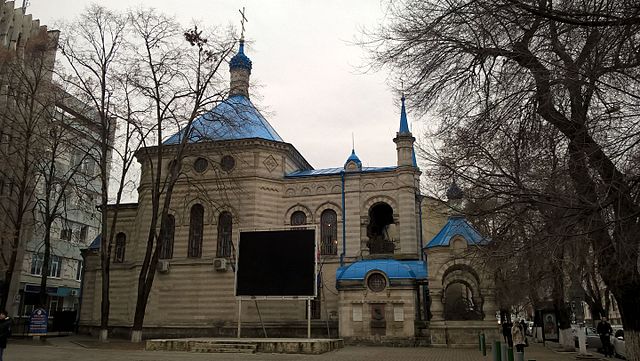Persecution of Christians in the Eastern Bloc
After the October Revolution of November 7, 1917 there was a movement within the Soviet Union to unite all of the people of the world under Communist rule. This included the Eastern bloc countries as well as the Balkan States. Communism as interpreted by Vladimir Lenin and his successors in the Soviet government included the abolition of religion and to this effect the Soviet government launched a long-running unofficial campaign to eliminate religion from society. Since some of these Slavic states tied their ethnic heritage to their ethnic churches, both the peoples and their churches were targeted by the Soviets.
Demolition the Cathedral of Christ the Saviour on 5 December 1931: The USSR's official state atheism resulted in the 1921–1928 anti-religious campaign, during which many "church institution[s] at [the] local, diocesan or national level were systematically destroyed."
Russian Orthodox metropolitan Benjamin (Kazansky) facing charges by Revolutionary Tribunal of Petrograd for "Counter Revolutionary Agitation" (details).
St. Teodora de la Sihla Church in Central Chișinău was one of the churches that were "converted into museums of atheism", under the doctrine of Marxist–Leninist atheism.
Marxist–Leninist atheism, also known as Marxist–Leninist scientific atheism, is the antireligious element of Marxism–Leninism. Based upon a dialectical-materialist understanding of humanity's place in nature, Marxist–Leninist atheism proposes that religion is the opium of the people; thus, Marxism–Leninism advocates atheism, rather than religious belief.
Ludwig Feuerbach, who separated philosophy from religion to allow philosophers the freedom to interpret the material reality of nature
Karl Marx, who synthesized anti-religious philosophy with materialism to show that religion is a social construct used for social control by the ruling class of a society
Friedrich Engels, who identified religion as a person's need for a fantastic spiritual reflection of the self, by which to have some control over life and reality
The painting Bolshevik by Boris Kustodiev depicts a Bolshevik revolutionary, bearing the red flag, glaring at an Eastern Orthodox church







